 UptimeObserver
VS
UptimeObserver
VS
 Uptime.com
Uptime.com
UptimeObserver
UptimeObserver delivers robust online service monitoring, allowing users to proactively track website uptime, DNS changes, port availability, domain expiry, and SSL certificate status. Its all-in-one dashboard helps businesses and IT administrators detect issues instantly, with configurable notification intervals and responsive support.
Integrations with communication platforms like Slack, Telegram, Discord, and Pushover enable immediate alerts, ensuring teams are always informed and able to respond quickly. With a choice of flexible plans—including a free tier, fast monitoring intervals, and multiple status pages—UptimeObserver supports scalable solutions to safeguard your digital presence efficiently.
Uptime.com
Uptime.com is an advanced monitoring platform designed to provide unified visibility into website, API, and infrastructure performance. It offers a wide array of monitoring solutions including synthetic, real-user, and API monitoring, enabling organizations to detect issues, track outages, optimize speed, and ensure reliability across digital services. With globally distributed monitoring locations, organizations gain actionable insights and reliable incident alerts, supporting proactive management of online assets.
Users benefit from customizable dashboards, SLA and root cause reporting, and scalable alerting integrations. The platform's capabilities include status page management, private location monitoring, and secure data protection, empowering engineering and operations teams to maintain seamless digital services and enhance customer trust. Uptime.com’s transparent pricing, robust support, and affiliate program make it a suitable choice for businesses of any size seeking dependable uptime management solutions.
Pricing
UptimeObserver Pricing
UptimeObserver offers Freemium pricing with plans starting from $6 per month .
Uptime.com Pricing
Uptime.com offers Freemium pricing with plans starting from $9 per month .
Features
UptimeObserver
- Website Monitoring: Proactive uptime checks at customizable intervals
- DNS Monitoring: Alerts for DNS record modifications
- Port Monitoring: Continuous monitoring of critical server ports
- SSL Certificate Monitoring: Advanced alerts before certificate expiry
- Domain Name Monitoring: Early reminders for impending domain expiration
- Multi-Platform Integrations: Real-time alerts via Slack, Telegram, Discord, Pushover, Webhooks, and Email
- Customizable Status Pages: Share incident and uptime statistics with stakeholders
- Multiple Monitoring Intervals: Granular settings from 30 seconds up to 5 minutes
- Free and Paid Plans: Flexible choices for different business needs
- Basic and Priority Support: Email and chat-based assistance
Uptime.com
- Website Monitoring: Detects downtime, optimizes speed, and ensures website accessibility.
- API Monitoring: Real-time tracking and performance optimization for API endpoints.
- Synthetic Monitoring: Simulates user flows to proactively detect failures and performance issues.
- Real User Monitoring (RUM): Tracks live website experiences and identifies performance bottlenecks.
- Advanced Alerting: Sends targeted alerts via SMS, email, and integrations to reduce incident response time.
- Status Pages: Public or private status updates for incident communication and trust maintenance.
- Customizable Dashboards: Real-time uptime and performance data for operational visibility.
- Private Location Monitoring: Secures monitoring for internal services behind firewalls.
- Group & Heartbeat Checks: Consolidated and cron job monitoring to ensure service health.
- Reporting & Analytics: SLA, root cause, and performance analytics for trend spotting and compliance.
Use Cases
UptimeObserver Use Cases
- Ensuring e-commerce website uptime and customer trust
- Receiving instant alerts for server outages or SSL issues
- Managing IT infrastructure with proactive monitoring and advance notifications
- Monitoring DNS and domain record changes for security
- Maintaining compliance by avoiding SSL or domain expiries
- Providing transparency with status pages for clients and users
Uptime.com Use Cases
- Continuous website availability monitoring for online service providers.
- API uptime and performance oversight for SaaS businesses.
- Synthetic user flow and transaction testing for ecommerce websites.
- Real-time outage and downtime detection for IT operations teams.
- Performance benchmarking and reporting for digital agencies.
- Third-party service monitoring for multi-vendor tech stacks.
- Provisioning public and private status pages for customer transparency.
- Monitoring hybrid cloud and on-premises infrastructure for enterprises.
FAQs
UptimeObserver FAQs
-
How often does UptimeObserver check my site?
Monitoring intervals can be customized from every 30 seconds to less frequent intervals, depending on the selected plan. -
What types of alerts does UptimeObserver provide?
Alerts can be sent via email, Telegram, Slack, Discord, Pushover, and other available integrations to ensure prompt notifications. -
What happens if my website goes down?
You receive an alert through your chosen communication method, including details about the downtime or issue detected. -
Does UptimeObserver check from multiple locations?
Multiple location monitoring is currently available to a limited group of customers, with plans to expand availability soon.
Uptime.com FAQs
-
What is included in a basic check?
A basic check on Uptime.com verifies the availability and performance of your website or service by sending simple requests, such as HTTP/S, SSL/Certificate, DNS, and more, to detect downtime or connectivity issues. -
What are advanced checks?
Advanced checks provide comprehensive monitoring, including API monitoring, synthetic transaction testing, micro-transaction checks, and page speed monitoring, allowing detailed insights into your website’s performance and functionality. -
Are there setup fees or hidden charges?
No, Uptime.com does not charge setup fees or hidden costs. Pricing is transparent and based solely on the selected tier and any additional modules you opt for. -
Can I get a demo before purchasing?
Yes, Uptime.com offers personalized demos to help you understand the platform’s monitoring and site reliability capabilities before making a purchase. -
Do you offer discounts for annual billing?
Yes, customers who choose annual billing receive a discount of over 20% compared to monthly billing.
Uptime Monitor
Uptime Monitor
Average Uptime
100%
Average Response Time
840.37 ms
Last 30 Days
Uptime Monitor
Average Uptime
100%
Average Response Time
188.23 ms
Last 30 Days
UptimeObserver
Uptime.com
More Comparisons:
-
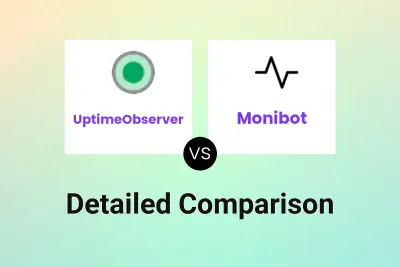
UptimeObserver vs Monibot Detailed comparison features, price
ComparisonView details → -

UptimeObserver vs Uptime.com Detailed comparison features, price
ComparisonView details → -

UptimeRobot vs Uptime.com Detailed comparison features, price
ComparisonView details → -
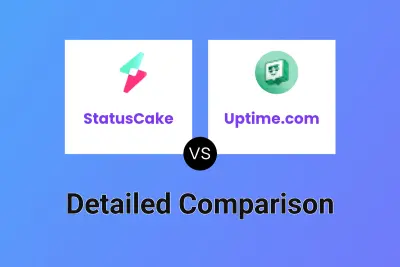
StatusCake vs Uptime.com Detailed comparison features, price
ComparisonView details → -

UptimeObserver vs Statustes Detailed comparison features, price
ComparisonView details → -
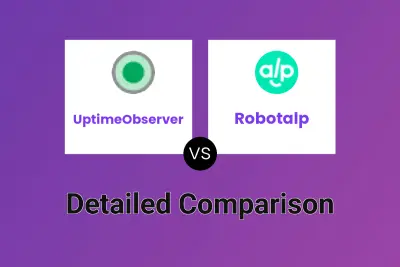
UptimeObserver vs Robotalp Detailed comparison features, price
ComparisonView details → -
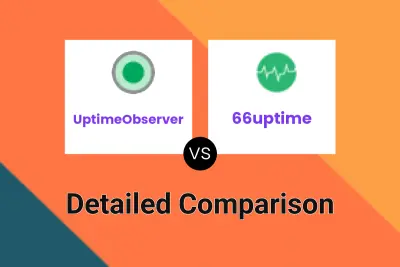
UptimeObserver vs 66uptime Detailed comparison features, price
ComparisonView details → -
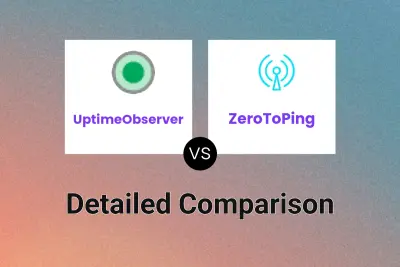
UptimeObserver vs ZeroToPing Detailed comparison features, price
ComparisonView details →
Didn't find tool you were looking for?